Austin S. Camacho's Blog, page 13
September 1, 2015
The First Hannibal Jones Interview
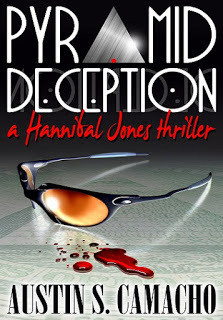 On the run up to the release of the next Hannibal Jones mystery I thought new readers might appreciate a chance to get to know the detective a bit better. So I'm posting here the first time Hannibal agreed to be interviewed by a reporter. He introduces that interview in his own words:
On the run up to the release of the next Hannibal Jones mystery I thought new readers might appreciate a chance to get to know the detective a bit better. So I'm posting here the first time Hannibal agreed to be interviewed by a reporter. He introduces that interview in his own words:I don’t generally like being in the spotlight. I guess the Secret Service taught me it’s better to keep a low profile.
But I’m not with them anymore, and this reporter Irma Andrews helped me unravel a series of murders that caused a lot of collateral damage among the families of the victims. So when Irma asked for an interview I didn’t see how I could say no. Despite my girl Cindy’s prompting I refused to do a TV piece. Appearing in print is bad enough. At least Irma didn’t misquote me, but I think she left out some stuff that makes the whole thing a little misleading. Anyway, here’s the way the piece ran:
________________________________________________________________________________
I met with private investigator Hannibal Jones in his office in the Anacostia section of Washington. He offered me an excellent cup of coffee, which he said was made from Costa Rican beans, and sat at his desk with sunlight pouring in through large front windows. The office was small and Spartan, sparely furnished but warm and bright. Significantly, while I took notes during the interview, so did Mr. Jones.
Irma Andrews: Thank you for speaking with me today. You are listed as a private investigator but your card describes you as a troubleshooter. How would you describe what you do, and why is it different from what most P.I.’s do?
Hannibal Jones: Most private investigators do employment vetting, matrimonial and divorce work, insurance claims and that kind of stuff. My work is a lot more focused. My clientele is individuals, not corporations. I work with people who are in trouble and don’t know where to get help.
IA: But you do bodyguard work.
HJ: Sometimes.
IA: And solve mysteries like any detective.
HJ: On occasion.
IA: And if a person has been threatened?
HJ: Look, I do whatever’s necessary to help somebody who’s gotten themselves into a jam. I don’t think much about what that might be, going in.
IA: What qualifies you to do this sort of work? What is your professional background?
HJ: As soon as I was old enough I moved to the States and joined the New York City police force.
IA: You weren’t born in the United States?
HJ: No. I was raised in Germany. My dad was an MP in the army. My mom was a German national. We lost Dad in Vietnam. Anyway, I came to the U.S. to be a cop and I was going to bring Mama over as soon as I was settled but she passed.
IA: While you were away.
HJ: (pause.) Yes. While I was away.
IA: I’m sorry. So, you became a policeman…
HJ: Three years on the force to make detective J.G. Then three more as a detective. Then I passed the Secret Service entry exam. I spent seven years as a special agent for the Treasury Department, in the protective service.
IA: But after seven years, you resigned.
HJ: Yeah, well, stuff happened. I should have been one of the uniforms instead of going to the protective service. You see, in the protective service they expect you to not only protect your principal’s life, but his reputation too. I didn’t think my duty should included covering up a politician’s stupid actions. My boss disagreed.
IA: Any politician in particular?
HJ: Not going to go there.
IA: A national figure? Executive branch or…
HJ: I’m not going to go there.
IA: All right. So you had friction with your supervisor. For that you resigned?
HJ: Yeah. Well, after I knocked him on his ass the service was good enough to let me resign.
IA: Should I print that?
HJ: Why not. It’s what happened. They were actually pretty nice about it. Could have stopped me from getting the P.I license you know.
IA: So why this whole troubleshooter concept? How did you get into this business?
HJ: I guess in a way I did it for Mama. She always wanted me to follow my dad’s example. He was always there for people, always looking out for the little guy. Here in Washington, it seemed like there was an overabundance of little guys that needed looking out for.
IA: How do you get enough clients?
HJ: It was slow at first, but word of mouth is a powerful force in the hood. I did a couple of jobs pro bono - kept a couple of kids from being approached by drug dealers. After that people started to find me when they had problems.
IA: So your neighbors are your clients?
HJ: My clients are people with problems bigger than they are. Naturally that happens more often to people without big money.
IA: I know you’ve also had more affluent clients.
HJ: Well, I do get referrals from old Secret Service contacts. And I get business referred to me by the attorney I introduced you to, Cindy Santiago, my, um, friend.
IA: So you do have entrees into a higher financial stratum, but the well-to-do don’t come to Anacostia. Why have your office here?
HJ: That’s a bit of a story. This building used to be a crack house, believe it or not. I was hired to clear the bad element out of here for the owner. In the process I kind of bonded with the neighborhood. I felt at home here, and I knew if I stayed, the bad element wouldn’t be back. I guess the owner knew it too. He made me a very attractive offer to stay.
IA: Why not join a larger detective agency?
HJ: I like deciding who I’ll take as a client, and what kind of job I’ll do.
IA: What kind of job will you do?
HJ: All kinds. Well, no matrimonial stuff, or spying on people waiting for them to do wrong. But I do personal protection, missing persons, sometimes get hired to prove an accused person innocent. I’ll chase a bad element away like I did here, keep drug dealers away from kids or a pimp away from a hooker who wants to quit. Negotiate with loan sharks. Basically, if you have to deal with the bad guys and don’t want the police involved, I’ll usually handle it.
IA: You carry a pistol. What do you think of gun control laws?
HJ: Good gun control means being able to hit the target. Anybody who wants a gun can get one, so restrictive laws only keep people who obey the law unarmed and unable to defend themselves.
IA: But isn’t it too dangerous for everyone to be able to have a gun?
HJ: Based on statistics, it’s too dangerous for everyone to be able to have a car. Maybe guns should be more like cars. You get a license to carry at 18, after passing a mandatory training course.
IA: Interesting. How would you describe your relationship with the police?
HJ: I’d call it mutual grudging respect. I don’t mess with them. They don’t mess with me.
IA: How would you describe your personal relationship with Cindy Santiago?
HJ: I would describe it as personal.
IA: What have you learned doing this?
HJ: I’ve learned that most people are sheep. They’re not looking for trouble and they’ll do the right thing if you let them. A few people are wolves. They prey on the sheep, and they’re going to do wrong no matter what you do. They need to be shut out or put down hard.
IA: And you? Where do you fit in?
HJ: Me? I guess I’m the sheepdog.
Published on September 01, 2015 16:18
August 29, 2015
Book Signing - Be Active
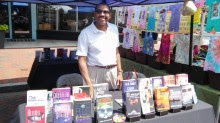 Last week we talked mostly about how to set up a book signing. But what do you do when you finally get there?
Last week we talked mostly about how to set up a book signing. But what do you do when you finally get there? Well here’s the number one thing NOT to do: Don’t just sit there. A surprising number of people are uncomfortable about walking up to an author and talking to them. So if you want your event to be a success, stand up and talk to people. Say hello to everyone who passes by. If they speak, or stop, or even make eye contact, continue the conversation. Ask if they like the kind of book you write. Tell them you’re an author – you’d be surprised how many people will see you at a table behind a stack of books and not make the connection that you are a writer. A sign on your table with your name and the words “author signing” can help, but don’t count on the bookstore to supply one.
It’s also a good idea to have something to put in people’s hands. Bookmarks are good. Post cards are good. Flyers are better. People who walk right past you might read the exciting copy (like what I hope is on your back cover) and stop back to chat with you on their way out of the store. Because I write series novels, I have a trifold with the covers and a short blurb about each of my novels. Sometimes people circle back to my table after wandering all around the bookstore, point at one of the covers in the trifold and just say, “I want this one.”
For those that do stop to chat, have your elevator pitch ready. Your one-minute talk should deliver the who-what-when-where, and most important, why someone should want to buy your book. Something like this for my next novel:
“I write mysteries. Hannibal Jones – the star of my mystery series - is an African American private eye based in Washington DC. In my newest novel, PYRAMID DECEPTION, he takes on the most important client of his life: his own girlfriend. She gets taken in a scam so he’s trying to get her money back. When Hannibal finally tracks down a lead he goes to question the woman, but she gets gunned down right in front of him in a drive by shooting. Then her body disappears and Hannibal is the top suspect. So he’s got to clear his name, recover his girl’s money AND solve a murder. It’s a mystery that will keep you guessing right to the end. And I’d be happy to sign one for you.”
It’s less than a minute and leads directly to a yes or no.
More book signing tips next week.
Published on August 29, 2015 13:00
August 22, 2015
Book Signing - Make it Special
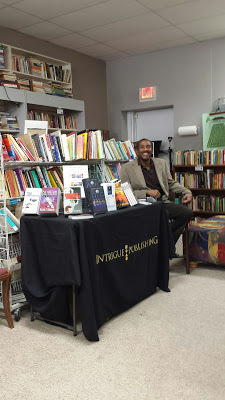 A couple of weeks ago I did a book signing at the nearby Barnes and Noble in Bowie MD with my label-mate DB Corey (Yes, they still have signed copies of our novels. Hint! Hint!) I always enjoy these events. I won’t deny the importance of social media, but for me nothing matches the face-to-face connection I make when I’m talking to people about my novels in person. As cool as it was, my mind has wandered since then, mulling over what could have made that good experience better. A lot of ideas have come to mind, so I figured I’d share.
A couple of weeks ago I did a book signing at the nearby Barnes and Noble in Bowie MD with my label-mate DB Corey (Yes, they still have signed copies of our novels. Hint! Hint!) I always enjoy these events. I won’t deny the importance of social media, but for me nothing matches the face-to-face connection I make when I’m talking to people about my novels in person. As cool as it was, my mind has wandered since then, mulling over what could have made that good experience better. A lot of ideas have come to mind, so I figured I’d share.Of course, it’s hard enough to even GET a book signing. There are fewer bookstores every day, and many of those that remain have no interest in doing author events. Various Barnes and Nobles stores have given me a broad variety of reasons they don’t do signings and they all say it’s “company policy.” I believe the real reason is the manager doubts any writer they never heard of will bring new people into the store. After all, if someone comes in and buys your book instead of another one they would have bought, the store hasn’t gained anything. You’d need to sell a book to someone who would have bought nothing or sell a book in addition to another they wanted. In other words, the manager has to believe you’ll bring your own crowd.
So, when you talk to a bookstore manager (or in the case of Barnes and Noble, the Community Relations Managers) be sure to tell them that you will promote your book signing aggressively through regional media and your local mailing (you do have one, don’t you?) And assure them you haven’t done another signing within an hour’s drive of their store. That way they know you won’t burn out your local market before you get to their store.
The store I most recently signed in only does multi-author events and I see nothing wrong with that. More writers usually mean more publicity. But to make the best of it, have some actual activities planned. Want to do a reading? Give a talk? (I plan to do my “why people love mysteries” presentation next time) or offer a workshop? Each author can offer something different and in the meantime the others are available to sign books.
So much for what to offer the bookstore. Next week I’ll talk about what to do when you get there.
Published on August 22, 2015 16:16
August 17, 2015
Pre-Release Marketing My Novel
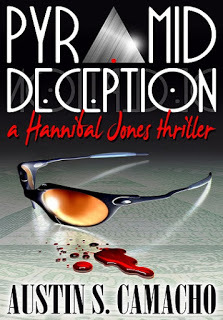 If you visit here regularly you already know that my next novel, PYRAMID DECEPTION will be released November first. If you’re wondering why I’d be talking about it now, you might be missing out on an important part of getting your books noticed. Promotion for your novel needs to start long before anyone can buy it.
If you visit here regularly you already know that my next novel, PYRAMID DECEPTION will be released November first. If you’re wondering why I’d be talking about it now, you might be missing out on an important part of getting your books noticed. Promotion for your novel needs to start long before anyone can buy it.Most of this pre-pub promotion is fun for me. The one part that is not is the very first step. Major reviewers want their Advance Reader Copies 120 days before the release date. That means that review copies went into the mail before July 1. Luckily I have a small press behind me so someone else does the really hard work – build a list, address envelopes, haul books to the post office – but it will be well worth it when the guys at Publisher’s Weekly finally wise up and review one of my novels. So far my biggest successes in this arena have been Library Journal and the local papers. But I remain optimistic.
Everything else is getting the attention of actual readers and building anticipation. That starts 3 months out. I kick it all off with a cover reveal on Facebook and my web site. Then I leak the story ideas and synopsis. I’m purposely stingy with details because, just like when they’re reading a mystery novel, fans enjoy the suspense.
In September I’ll get help from the characters. I’ll post interviews of Hannibal and his supporting cast. I might let the characters give some more hints as to what the book is all about. All this time I’m also chatting with book stores about staging events around the November release. I’m also bugging bloggers about visiting their pages at release time. Guest blogs are pretty easy – the cover, synopsis, a sample chapter and/or one of the interviews I’ve already created will generally do the job.
I wait until the month before release to start sharing sample chapters. I post these on my web site and leave links on Twitter and Facebook to draw people in. I also plant those links on LinkedIn in the writer and reader groups I’ve joined. Asking other writers’ opinion of your samples can be exciting or humbling, but either way it does get engagement.
If pre-publication marketing interests you, stay tuned. In December Intrigue Publishing will release its first anthology and, trust me, promoting a book when you don’t have an author’s brand as your basis is a whole ‘nother thing. But it might turn out to be even more fun!
Published on August 17, 2015 10:23
August 8, 2015
Elements of Mystery II
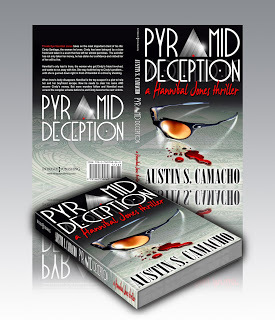
Last week I listed some of the essential elements of a mystery story and asked what you thought was missing. I got quite a bit of feedback and, luckily, all the suggestions do appear in my upcoming novel, PYRAMID DECEPTION. Here are the elements I didn’t discuss last time.
It’s not really a mystery without clues embedded in the story. It’s best to mix them up between material, behavioral and informational clues. Physical clues can be hidden in the setting or the crime scene. Clues can be detected from interactions with the suspects. The best clues are both subtle and clever. But don’t make the mistake of dropping too many clues. If they’re really clues that makes the solution too easy. If there are a lot of false clues readers will resent the artless misdirection.
Readers appreciate the weapon or means of killing, so a physical description of the “how” (how the victim was killed or how the missing item was stolen) is essential. This offers a great opportunity to embed clues so don’t skimp on the description.
I list tension as an essential element because stories without it are boring. There needs to be dissent between the characters, especially between the suspects and your detective. It’s just not realistic for the suspects to happily comply with the sleuth. Detection is more fun to watch if each clue is hard won.
And there must be misdirection, or at least serious distractions. This is where a writer gets into the art of mystery writing. False clues should be woven in with real clues, or tied to a sub plot. They can’t be used gratuitously. Readers will consider that a waste of their time.
Finally, every mystery must have a logical resolution. For your mystery to be satisfying, you must play fair with your readers. They must see all the clues necessary to solve the puzzle, even if they are cleverly hidden. You must not simply pull the solution out of the ether. The readers must have been able to both follow the path and feel that they could have – and SHOULD have – predicted the ending.
For many mystery writers these elements arise automatically as they create their stories. But don’t trust to luck. If you are a plotter, like me, you should make sure all ten of the essential elements are in your story before you begin to actually write. On the other hand, if you are the kind of writer who flies by the seat of his pants you will need to stay aware as you proceed, and not miss the opportunities to include these elements.
NOW… are there other essential elements you feel a mystery needs? Let me know.
Published on August 08, 2015 08:12
August 4, 2015
Essential Elements of Mystery Fiction
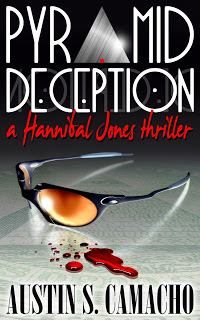 Saturday I was lucky enough to participate in the Virginia Writer’s Club annual symposium. A big part of the fun was teaming up with fellow mystery author Rosie Shomaker to deliver a workshop called “Writing Mysteries: the Why, What and How of it.”
Saturday I was lucky enough to participate in the Virginia Writer’s Club annual symposium. A big part of the fun was teaming up with fellow mystery author Rosie Shomaker to deliver a workshop called “Writing Mysteries: the Why, What and How of it.”After giving our class a clear definition of the mystery story, and spending some time explaining why writers should choose to create mysteries, we enumerated what we think are the ten essential elements of a mystery story with some do’s and don’ts. I thought you might like to know them too.
First, of course, you must have a mystery. There must be a secret, something missing or an unsolved crime. And of course there has to be a victim. Most important here is to explain the damage and the stakes. In other words, who was harmed, killed or put in danger? And the stakes need to be high, otherwise readers won’t care.
Next you need an investigator. Please don’t use some random, passer-by as your sleuth. He or she needs to have a vested interest in solving the crime.
You’re going to need some suspects. The guilty party should be among them, and you need to introduce this person early. When you bring the real villain in late the detective’s examination of earlier suspects feels like a waste of the reader’s time. And, while we need a selection to choose from, you shouldn’t have too many suspects. Agatha Christie’s “little Indians” aside, ten is too many.
The setting is a necessary element of a good mystery. Be specific about where your mystery is happening and make that setting three-dimensional, that is, describe it with all your senses. Mysteries take us where we want to go, or sometimes they just show you the places you already know. My detective, Hannibal Jones, lives and works in Washington. He shares the city with James Patterson’s Alex Cross and George Pelecanos’ Derek Strange. Of course Laura Lippman’s Tess Monahan rules Baltimore, Robert B. Parker's Spencer owns Boston, and Paula Woods redefines L.A. urban noir with Charlotte Justice. Janet Evanovich takes a rather satirical look at New Jersey. And Alexander McCall Smith’s books about the No. 1 Ladies Detective Agency are set in Botswana.
And of course your mystery must have actual detection. Your sleuth has to examine, investigate, and interview those suspects to build their motive, means and opportunity. The detective must ferret out both physical and relational facts and connections. Don’t let your protagonist luck into the information he or she needs. Likewise, don’t have your sleuth endlessly listening to gossip or hearsay. The information gained from interviews should be validated and compared in order to learn who’s lying.
But we said ten essential elements, didn’t we? I’ll talk about the others next week.
Published on August 04, 2015 06:42
July 26, 2015
Don't Judge Me for Judging
After assembling my own anthology for publication (Young Adventurers, due for release in December) I thought I was fully ready to help judge a short story contest that would result in an anthology for fellow publisher. Well… maybe.
Nancy Sakaduski of Cat & Mouse Press invited me to be one of the six judges for this year’s Rehoboth Beach Reads Short Story Contest. I was honored, but still didn’t really know what I was getting myself into. Nancy is tapped into a pretty vital writing community in Delaware, which resulted in more than 130 submissions! When I got my first batch of 40 stories to review I figured I’d blow through them pretty quickly. I just needed to pick my top five choices with no reviews, comments, or explanation required. We were judging the stories based on their creativity, quality of writing, their suitability as a beach read, and how well they fit the beach theme. Eliminations should be easy, right? You know a story’s too weak by the end of the first page. The problem is, almost none of them was weak. This was a pretty darn good bunch of stories. I wanted five great reads to float to the surface, but it was more like twenty. I had to get really picky to choose the 5.But then we all needed to read the entire group of semi-finalists. Six judges, five stories each. That means thirty counting my five, but surely there’d be a lot of overlap that would reduce that number, right? Well, not so much. We had 28 semi-finalists to consider. And shoot, almost all of these were really good! Plus there was the apples vs oranges issue: is this really well written romance better or worse than that well written humorous story? Or the thriller? But hard choices had to be made. We each shared our top three choices (although I couldn’t resist mentioning two that were an eyelash away from the top three.) Finally, we judges met to hash out which of these fine efforts would be declared first, second and third place winners. There was lively discussion but no conflict really. These people were definitely my respected peers and we all made passionate arguments for our favorites. Ultimately we all loved the top stories to some degree so settling on final winners was not that hard. And we each got to give a Judge’s Award to a favorite that didn’t make it into the top three.
It was exhausting but SO rewarding, and I now know several authors I want to pursue for a Intrigue Publishing. If you are an accomplished writer you should look for an opportunity to judge. It’s a wonderful experience.
Nancy Sakaduski of Cat & Mouse Press invited me to be one of the six judges for this year’s Rehoboth Beach Reads Short Story Contest. I was honored, but still didn’t really know what I was getting myself into. Nancy is tapped into a pretty vital writing community in Delaware, which resulted in more than 130 submissions! When I got my first batch of 40 stories to review I figured I’d blow through them pretty quickly. I just needed to pick my top five choices with no reviews, comments, or explanation required. We were judging the stories based on their creativity, quality of writing, their suitability as a beach read, and how well they fit the beach theme. Eliminations should be easy, right? You know a story’s too weak by the end of the first page. The problem is, almost none of them was weak. This was a pretty darn good bunch of stories. I wanted five great reads to float to the surface, but it was more like twenty. I had to get really picky to choose the 5.But then we all needed to read the entire group of semi-finalists. Six judges, five stories each. That means thirty counting my five, but surely there’d be a lot of overlap that would reduce that number, right? Well, not so much. We had 28 semi-finalists to consider. And shoot, almost all of these were really good! Plus there was the apples vs oranges issue: is this really well written romance better or worse than that well written humorous story? Or the thriller? But hard choices had to be made. We each shared our top three choices (although I couldn’t resist mentioning two that were an eyelash away from the top three.) Finally, we judges met to hash out which of these fine efforts would be declared first, second and third place winners. There was lively discussion but no conflict really. These people were definitely my respected peers and we all made passionate arguments for our favorites. Ultimately we all loved the top stories to some degree so settling on final winners was not that hard. And we each got to give a Judge’s Award to a favorite that didn’t make it into the top three.
It was exhausting but SO rewarding, and I now know several authors I want to pursue for a Intrigue Publishing. If you are an accomplished writer you should look for an opportunity to judge. It’s a wonderful experience.
Published on July 26, 2015 17:19
July 13, 2015
It's All About the Dialog III
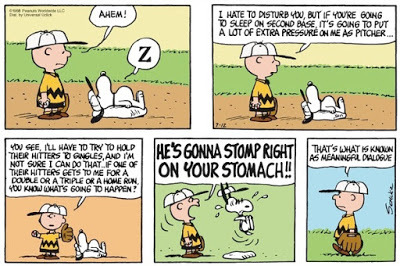
Last month I wrote a bit about dialog, but it was all just mechanics. But remember that good dialog is so important to your fiction because dialog is the best place to reveal your character’s inner self. It is also the place where you can most easily destroy your character, and your book. I know you’ve been told that every writer should have his own individual voice. If you want your characters to become real people, they too should each have an individual voice, and that voice should grow organically out of who that person is.
You must think of every character you create as a real person, as real as you or me. How you speak is the result where you come from, your age, your ethnic background, your gender, whether you’re a leader or follower, and whether you’re an introvert or an extrovert. So you need to know all of that and more about every character before he opens his mouth. Your speech is also affected by what groups you have belonged to. For example, ex-cons and retired soldiers have distinctive speech patterns that are very different.
One final tip on making your dialog fresh and believable. When you have a conversation written and you think it’s the way it is supposed to be, the final test is done by ear. Read your dialog aloud. Say exactly what you wrote, and if you find yourself tempted to change it in the reading, consider changing what is on the page. If you stumble over an unintentional tongue twister, change that too because people don’t usually say things that are hard for them to say during conversations. And pay attention to the word choices. Consider this sentence from a book I was asked to critique: “Your sourpuss persona is rubbing off on everyone, including Whimsy. She’s seven years old and by now you should have adjusted to being a parent—-she deserves more from you. It’s Christmas, for pity’s sake!”
Now, if you had written that and then read it aloud, I hope you would ask yourself - would the person who used a phrase like “sourpuss persona” also use a phrase like, “for pity’s sake?”
The test by ear is the final test of whether you’ve written strong, believable dialog. I hope these few tips will help you put better words into your characters’ mouths.
Published on July 13, 2015 07:53
July 3, 2015
What Genre Do I Write in?
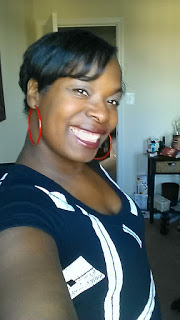 Today's guest author, B. Swangin Webster, is the mother of five grown children and the "Nina" of seven grandchildren. She continues to write because if she didn't, she believes she would stop breathing. "Live life with passion" is her motto and this is something that she does every day. She has written two successful novels that strike close to reality, yet people still ask what genre her work falls into. Today she explains.
Today's guest author, B. Swangin Webster, is the mother of five grown children and the "Nina" of seven grandchildren. She continues to write because if she didn't, she believes she would stop breathing. "Live life with passion" is her motto and this is something that she does every day. She has written two successful novels that strike close to reality, yet people still ask what genre her work falls into. Today she explains.What is the genre I write in?
Well with a name like B. Swangin Webster you may assume, erotica. WRONG!
I write Contemporary Dramas. It can also be called Urban Drama.
Next question…oh, like street lit? WRONG!
Contemporary/Urban dramas are nothing like street lit. There are no drug dealers in my novels (well one time there was but he was just passing through) and there are no women stripping for money or marrying a man for money.
Street lit is hard core literature that has taken the literary world by storm. Most street lit novels will have titles that include the word, (pardon my language) Bitch and Nigga. Most likely they will have covers with stacks of money on the cover or a scantily clad woman or man.
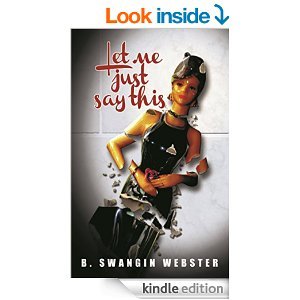 My novels have none of that. Yes, it may contain the word Bitch but not in EVERY conversation. Contemporary dramas are stories that can be lived right now. They could be your neighbor’s drama and most of them are LIFETIME movies. You know; the ones that have the stalker, the mistress or the missing child.
My novels have none of that. Yes, it may contain the word Bitch but not in EVERY conversation. Contemporary dramas are stories that can be lived right now. They could be your neighbor’s drama and most of them are LIFETIME movies. You know; the ones that have the stalker, the mistress or the missing child. What I write is taken from today’s headlines and fictionalized to put you in the middle of the situation and have you going through all of your emotions. If you don’t use at least 4 (or 5) emotions (well some say there are 6 emotions; but that’s another blog) while reading my novel, than I haven’t done my job.
So take a look at one of my novels and see what I write. Don’t assume that you won’t read an urban or contemporary drama because most movies that aren’t mystery, suspense or action are in fact contemporary dramas.
Give me a try and see if you enjoy it. Please feel free to contact me after you do; I’d love to hear from you. Just write to bswanginwebster@gmail.com - and make sure to LIKE my fan page on Facebook: www.facebook.com/authorbswanginwebster
Published on July 03, 2015 12:39
June 27, 2015
A Priest & A Rabbi Walk Into a Bar...
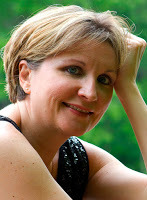 Today's guest blogger, Kimberly “Kimba” J. Dalferes, is a native Floridian who pretends to be a Virginian. Her accomplishments have included successfully threading a sewing bobbin, landing a 35 pound Alaskan king salmon, and scoring a ceramic sangria pitcher at an estate sale for $1. She also sometimes writes books. In fact, she allowed us to give you a sneak peek at her next book - The Magic Fishing Panties - right here! Her humor column–Dock Tale Hour–is featured in Laker Magazine. Today, Kimba tells us how to write humor her way.
Today's guest blogger, Kimberly “Kimba” J. Dalferes, is a native Floridian who pretends to be a Virginian. Her accomplishments have included successfully threading a sewing bobbin, landing a 35 pound Alaskan king salmon, and scoring a ceramic sangria pitcher at an estate sale for $1. She also sometimes writes books. In fact, she allowed us to give you a sneak peek at her next book - The Magic Fishing Panties - right here! Her humor column–Dock Tale Hour–is featured in Laker Magazine. Today, Kimba tells us how to write humor her way.I know it when I see it.Justice Potter Stewart, famously defining pornography
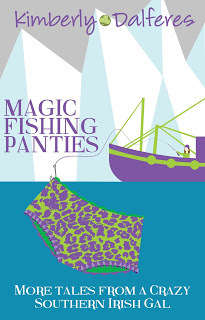 Good humor writing is a lot like Justice Stewart’s porno. One gal’s laugh-fest is another woman’s offensive screed. I know a good joke when I hear one and I know a funny essay when I read it. However, sometimes it’s difficult to describe how to write good humor. But, here goes.
Good humor writing is a lot like Justice Stewart’s porno. One gal’s laugh-fest is another woman’s offensive screed. I know a good joke when I hear one and I know a funny essay when I read it. However, sometimes it’s difficult to describe how to write good humor. But, here goes.Key elements of good humor writing are not that dissimilar from good writing in general: show, don’t tell. “The clown slipped on the banana peel” is telling. More akin to showing would be: “JoJo, the sad-faced clown, never saw the yellow castoff strip of peel lying limp in the middle of the already wet pavement. In his haste to join his brethren in their tiny red clown car, JoJo perilously ignored a key principle of the clown playbook: slippery when wet.”
A well-written humorous story often evolves through three distinct phases: the hook; the set-up; and the punchline.
The Hook.
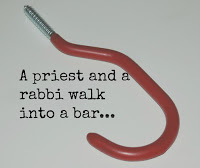
This statement–the hook– sets up the situation so the writer can now craft an engaging story. An effective hook has the reader pondering: Why are the priest and the rabbi together? What causes them to walk into a bar? What will happen to them in the bar?
The Set-up. The set-up often centers on an awkward situation, a ridiculous reaction, or a profound insight. In our example of our friends the priest and the rabbi, perhaps they are debating the use of Viagra, or why Viagra is blue, or how many Viagra pills it would take to screw in a light bulb. The set-up describes the bar, the conversation, and the back story leading up to the punchline.
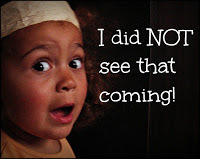 The Punchline. Every humorous story needs a punchline. This is the final element of the narrative intended to make the reader laugh, snort, or giggle. The build-up to the punchline can bring the reader along so that the story ending is obvious, yet satisfying. Or, a punchline can be unexpected, catching the reader off-guard and gleefully surprised.
The Punchline. Every humorous story needs a punchline. This is the final element of the narrative intended to make the reader laugh, snort, or giggle. The build-up to the punchline can bring the reader along so that the story ending is obvious, yet satisfying. Or, a punchline can be unexpected, catching the reader off-guard and gleefully surprised.One last suggestion: consider the “rule of three.” Like Goldilocks and the Three Bears or the Three Little Pigs, most stories seem to flow better, and are perceived as being funnier, when there are three discernible components. Taking this to heart, our hook should probably be changed to: A priest, a rabbi, and Hillary Clinton walk into a bar.
Gee, that is funnier.
Look for her new book, Magic Fishing Panties, to be released in August 2015 by Booktrope Publishing. She is often found hanging out on her blog The Middle-Aged Cheap Seats. You can also visit her at www.kimdalferes.com
Published on June 27, 2015 05:00



